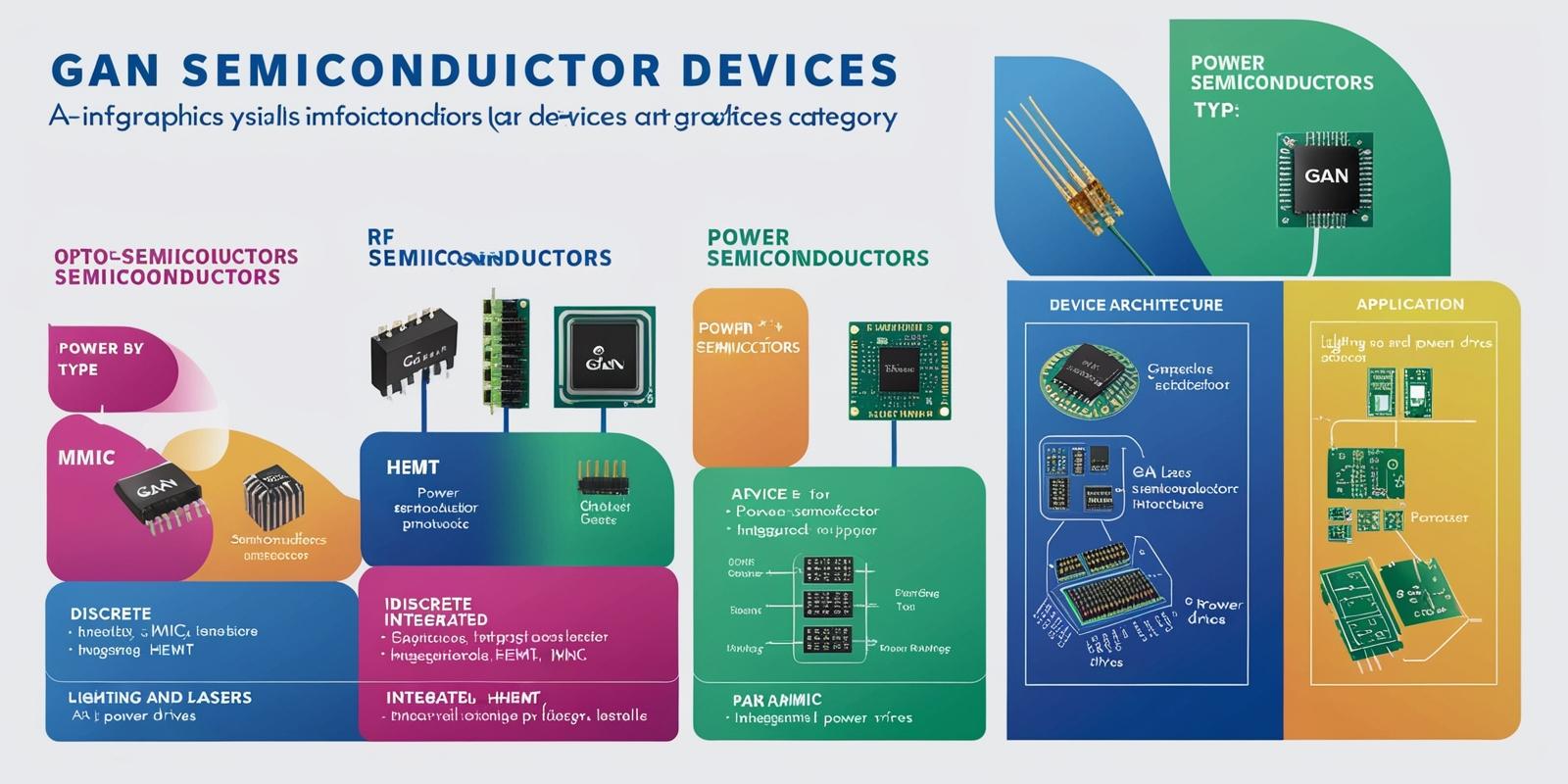The GaN (Gallium Nitride) semiconductor device industry is entering a high-growth phase as demand intensifies across two of the world’s fastest-evolving sectors: electric vehicles (EVs) and 5G telecommunications. With its superior power efficiency, higher switching frequency, and compact size, GaN technology is quickly becoming the go-to alternative to traditional silicon-based devices in high-performance applications.
Amid a global push toward electrification and faster connectivity, investments in GaN semiconductor device manufacturing, R&D, and integration are surging. Market analysts predict the global GaN device market will grow at a CAGR exceeding 20% through 2030, driven largely by the automotive, telecom, and industrial power segments.
Why GaN? The Case for Gallium Nitride Over Silicon
Gallium Nitride, a wide-bandgap material, offers higher electron mobility, faster switching speeds, and lower power losses compared to silicon. These features make GaN devices ideal for high-voltage, high-efficiency applications in power electronics and radio frequency (RF) systems—precisely what’s needed in modern EV powertrains and 5G infrastructure.
GaN’s ability to reduce energy loss while operating at high temperatures and frequencies enables smaller, lighter, and more efficient power systems. For automakers, this means longer battery range and more compact power inverters. For telecom providers, it translates into smaller, more energy-efficient base stations and better signal fidelity.
Download PDF Brochure https://www.marketsandmarkets.com/pdfdownloadNew.asp?id=698

Booming EV Market Accelerates GaN Adoption
The electric vehicle market is one of the primary growth drivers for GaN semiconductor devices. With EV sales projected to exceed 30 million units globally by 2030, the need for high-efficiency onboard chargers, inverters, and power distribution systems is growing exponentially.
GaN power devices enable:
-
Faster charging times
-
Lower heat generation
-
Improved battery performance
-
Smaller and lighter components for electric drivetrains
Leading automotive manufacturers and Tier 1 suppliers are integrating GaN into their next-generation platforms, and governments worldwide are incentivizing the use of more energy-efficient vehicle electronics, further boosting demand.
5G Rollout Fuels Demand for RF GaN Devices
The global deployment of 5G infrastructure is another major force behind the growth of the GaN semiconductor device industry. 5G networks require high-frequency, high-power RF amplifiers to support massive data transmission rates and dense signal coverage—capabilities where GaN excels.
Compared to traditional LDMOS (laterally diffused metal oxide semiconductor) technology, GaN RF devices offer better power density and efficiency, making them ideal for:
-
Small cell base stations
-
Satellite communications
-
Radar systems
-
Millimeter-wave applications
With telecom giants expanding 5G coverage and preparing for 6G R&D, GaN RF devices are increasingly becoming a cornerstone of modern wireless infrastructure.
Investment Landscape: A Race to Scale
The accelerating demand for GaN devices has triggered a wave of venture capital, M&A activity, and infrastructure investment in the semiconductor industry. Key players such as Infineon Technologies, Wolfspeed (formerly Cree), Navitas Semiconductor, Transphorm, and Qorvo are expanding production capacities, launching new product lines, and forming strategic partnerships.
Notable developments include:
-
New GaN fabs being announced in Asia, Europe, and North America
-
Joint ventures between GaN startups and automotive OEMs
-
Increased R&D budgets focused on monolithic integration and GaN-on-SiC substrates
These investments are also fueled by the broader industry’s shift toward wide-bandgap semiconductors as the demand for more efficient, compact, and heat-tolerant devices grows across multiple sectors.
Future Outlook: GaN’s Role in Next-Gen Tech
Beyond EVs and 5G, GaN technology is making inroads into consumer electronics, renewable energy systems, data centers, and aerospace and defense. Applications such as fast-charging adapters, solar inverters, and solid-state radar are all benefiting from GaN’s power efficiency and high-frequency capabilities.
As the world moves toward more electrified, interconnected, and energy-conscious systems, GaN semiconductor devices are positioned to become a foundational technology, reshaping the landscape of power and RF electronics.
The GaN semiconductor device industry is experiencing a pivotal moment, marked by strong investment, rapid technological advancement, and expanding end-use applications. The convergence of growth in electric vehicles and 5G infrastructure is catalyzing a new wave of adoption, with GaN set to outperform silicon in many of the most critical technologies of the next decade.
